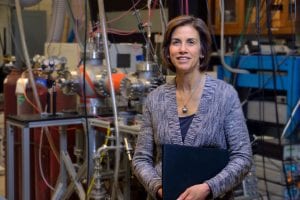Marsha I. Lester has risen through the academic ranks at the University of Pennsylvania, where she is currently the Christopher H. Browne Distinguished Professor in the Department of Chemistry of the School of Arts & Sciences. She completed a four-year term as Chair of the Department of Chemistry in 2009. Lester has received many honors including election to the National Academy of Sciences and the American Academy of Arts & Sciences. In addition, she has been awarded the Herbert P. Broida Prize of the American Physical Society, the Philadelphia American Chemical Society Section Award, the Garvan-Olin Medal of the American Chemical Society, the Bourke Lectureship of the Faraday Division of the Royal Society of Chemistry, a John Simon Guggenheim Memorial Foundation Fellowship, an Alfred P. Sloan Research Fellowship, and the Dreyfus Teacher-Scholar Award. She is a fellow of the American Physical Society, the American Association for the Advancement of Science, and the American Chemical Society.
Lester was Editor-in-Chief of The Journal of Chemical Physics, the preeminent journal in her field, from 2009-2018. During her ten years at the helm of the Journal, she reinvigorated the Journal with numerous initiatives to attract more of the best papers in the broadly defined field of chemical physics. Lester has consistently devoted a substantial amount of her time to scientific service activities. She has served on the NRC Commission on Physical Sciences, Mathematics, and Applications as well as its Board on Chemical Sciences and Technology. She has been engaged in activities of the American Chemical Society, the American Physical Society, the National Science Foundation, and the Department of Energy. She is also a founding member and past Chair of the Penn Forum for Women Faculty.
Lester’s research group has developed innovative methods for stabilizing ‘entrance channel complexes’ and reaction intermediates of environmental significance. Her group has employed novel spectroscopic methods to rigorously characterize these important, yet previously uncharted, regions of chemical reaction pathways.
